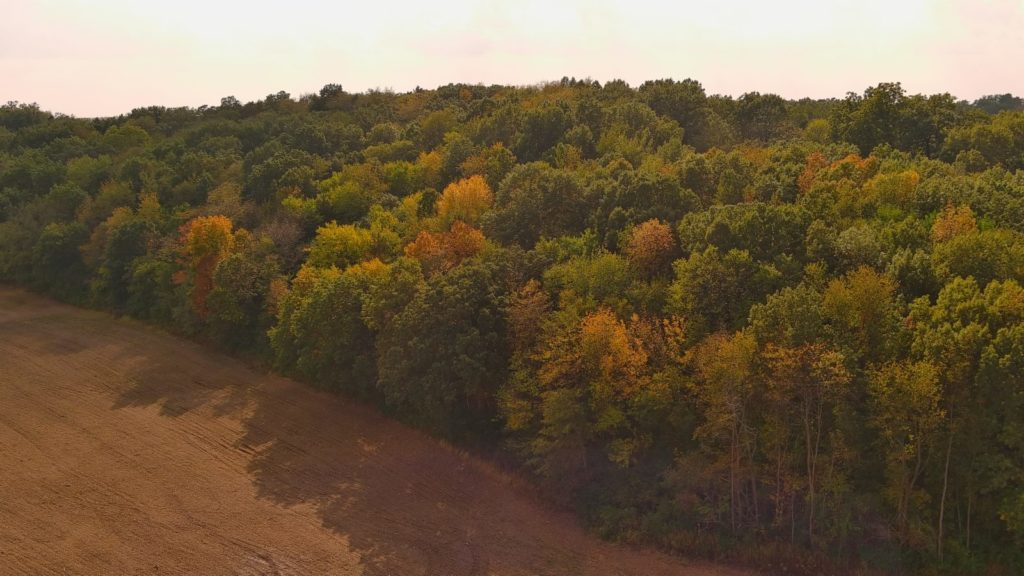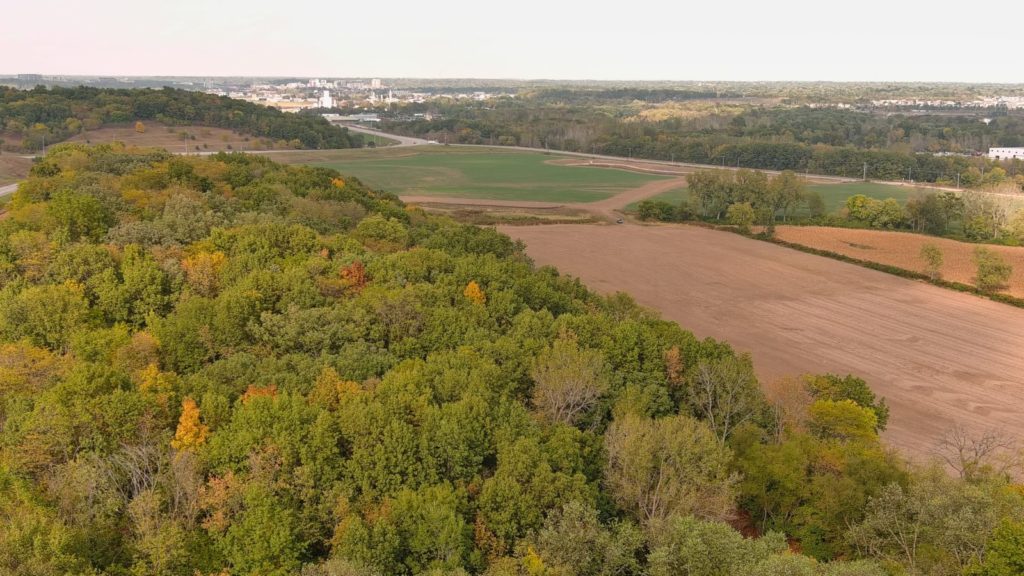A Diamond in the Rough

By Carter Johnson, Land Steward
Imagine walking on a hillside overlooking the Iowa River. Prairie flowers and grasses are nodding in the breeze as you wander through them. Butterflies and bees fly from flower to flower in search of sustenance. You can find some relief from the midday sun beneath the low branching shade of open-grown oak trees. This is the once and future vision for Oak Crest Hill, Bur Oak Land Trust’s most recent property acquisition.
Oak Crest Hill is a 13-acre parcel of wooded hillside south of Iowa City that the Trust acquired through a mitigation project with local developer C.J. Moyna and Sons. Currently, the site is not open to the public due to limited direct road access. Despite limited accessibility, we have already evaluated this site and are excited to share our plans for its future.
Initial surveys from the mid 1800s identified the vegetation on Oak Crest Hill as scattered trees and prairie. Aerial photographs from the 1930s and 1950s indicate an open hillside with fewer than 60 trees scattered throughout. This is strong evidence that some portion of this site was host to oak savanna, a system that supports a highly diverse community of plants and animals. Historically, this cover type was common on the Iowa landscape, but changes in land use and disturbance patterns have reduced the presence of oak savannas to small and rare remnants.

More recent aerial imagery shows a steady progression to closed canopy woodland in the past 20 to 30 years. Currently the large, open-grown oaks that defined the site are hemmed in by faster growing trees and a heavy infestation of non-native, invasive shrub species. These shade tolerant plants intercept nearly all sunlight before it reaches the ground, thereby stifling the growth of native grasses and flowers while eclipsing the potential for oak seedlings to germinate.
Given the rarity of the oak savanna remnant at Oak Crest Hill, and our commitment to improving biodiversity on our properties, we are undertaking an ambitious project to restore this site to a functional ecosystem. Incorporating best safety and ecological practices, our initial efforts will all go toward removal and control of the invasive honeysuckle and buckthorn populations on site. This phase of the project alone will involve thousands of on-the-ground hours from our staff and AmeriCorps stewardship crew.
Once sufficient sunlight is reaching the ground layer vegetation we will be able to determine our next steps for restoring the site. Native plant communities are extremely resilient, and can rebound after years of challenge or neglect. We may be able to allow the plant community to regrow on its own. A healthy population shooting star indicates that at least some of the former native plant community remains. The more likely scenario will be a carefully considered revegetation, or reconstruction, of the prairie and savanna flora on the site. Regardless of the exact next steps, we will begin to incorporate prescribed fire on this site to provide the periodic disturbances that prairie and savanna systems require to persist.
Achieving the vision I described above will require years of planning, execution, and evaluation on our part. Our ability to carry out these long-term projects is tied directly to our capacity as an organization. That capacity is due, in large part, to your financial support. It is a privilege to direct projects that will make meaningful change on our shared landscape. Thank you for making it possible.


